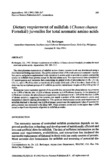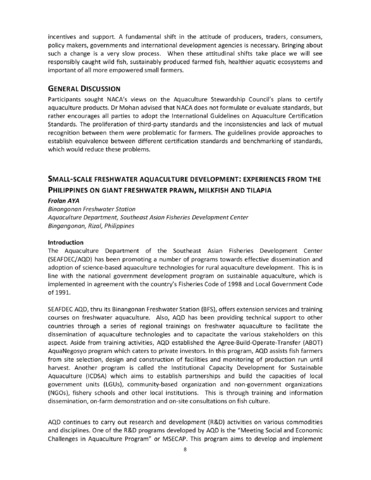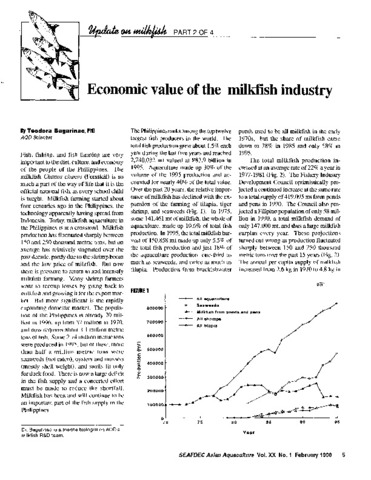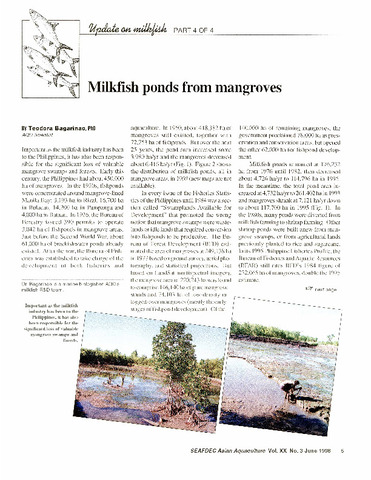Dietary requirement of milkfish (Chanos chanos Forsskal) juveniles for total aromatic amino acids
Share
Abstract
The phenylalanine requirement of milkfish at two dietary tyrosine levels was determined using a 2× 6 factorial feeding experiment. The amino acid test diets (45% crude protein) contained vitamin-free casein and gelatin supplemented with crystalline L-amino acids to provide an amino acid profile similar to milkfish tissue protein except for the test amino acid. The experimental diets consisted of 12 isonitrogenous and isocaloric diets containing six graded levels of phenylalanine (1.18, 1.3, 1.6, 1.9, 2.2, and 2.5% of dry diet) at two levels of tyrosine (0.45 and 1.2% of dry diet). Each of the 12 diets was fed to triplicate groups of 15 milkfish juveniles (initial mean weight = 0.58 ± 003 g) for 12 weeks.
Breakpoint linear regression analysis of the growth data estimated the phenylalanine requirement to be 1.90% of the dry diet (4.22% of dietary protein) at 0.45% dietary tyrosine. In the presence of 1.2% dietary tyrosine, the phenylalanine requirement was estimated to be 1.26% of the dry diet (2.80% of dietary protein), suggesting that tyrosine can supply a portion of the total aromatic amino acid requirement thereby sparing phenylalanine. The optimum total aromatic amino acid requirement of milkfish obtained in the study was 5.22% of dietary protein and the replacement value of tyrosine for phenylalanine was computed to be about 46%. Total aromatic amino acid levels higher than 6.88% caused a significant depression of growth in milkfish juveniles.
Suggested Citation
Borlongan, I. G. (1992). Dietary requirement of milkfish (Chanos chanos Forsskal) juveniles for total aromatic amino acids. Aquaculture , 102(4), 309-317. https://doi.org/10.1016/0044-8486(92)90184-M
Subject
Taxonomic term
Collections
- AQD Journal Articles [1249]
Related items
Showing items related by title, author, creator and subject.
-
Small-scale freshwater aquaculture development: Experiences from the Philippines on giant freshwater prawn, milkfish and tilapia
Aya, Frolan (Japan International Cooperation Agency, 2013-12)The Aquaculture Department of the Southeast Asian Fisheries Development Center (SEAFDEC/AQD) has been promoting a number of programs towards effective dissemination and adoption of science-based aquaculture technologies ... -
Economic value of the milkfish industry
Bagarinao, Teodora (Aquaculture Department, Southeast Asian Fisheries Development Center, 1998)A brief description is given of the milkfish (Chanos chanos) farming industry in the Philippines. Over the past 20 years, the relative importance of milkfish has declined with the expansion of tilapia, tiger shrimp and ... -
Milkfish ponds from mangroves
Bagarinao, Teodora (Aquaculture Department, Southeast Asian Fisheries Development Center, 1998)




